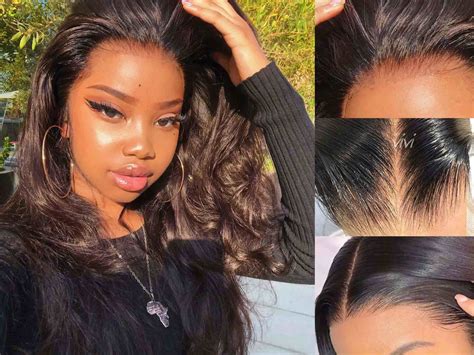The Ultimate Guide to Enhancing Your Appearance
Wigs have become an increasingly popular way to change up one’s appearance, enhance self-confidence, and express individuality. With the advancements in wig technology, natural-looking wigs are now available, providing wearers with a seamless and realistic look that mimics their own hair.

The Growing Demand for Natural-Looking Wigs
According to a report by the American Hair Loss Association, approximately 40% of women and 50% of men experience significant hair loss by the age of 50. This has led to a surge in demand for hair replacement solutions, including natural-looking wigs. The global wig market is projected to reach $15.6 billion by 2028, with a significant portion of that growth attributed to the demand for wigs that replicate the natural look of hair.
Benefits of Natural-Looking Wigs
- Enhanced Confidence: Natural-looking wigs can boost self-confidence by giving wearers the appearance of full, healthy hair, even if they are experiencing hair loss or thinning.
- Versatility: Wigs can be styled and colored to match any outfit or occasion, providing wearers with the freedom to experiment with their appearance without committing to a permanent change.
- Protective: Wigs can protect natural hair from damage caused by heat styling, chemicals, and environmental factors.
How to Choose the Right Natural-Looking Wig
Selecting the right natural-looking wig requires careful consideration of several factors:
- Fiber Type: Human hair wigs offer the most natural look and feel but are also the most expensive. Synthetic wigs are more affordable but may not have the same level of realism.
- Cap Construction: Lace fronts, 360 lace wigs, and monofilament caps provide the most undetectable hairlines and realistic scalp simulations.
- Color and Texture: Choose a wig that matches your natural hair color and texture as closely as possible for a seamless transition.
- Fit: A wig should fit snugly but comfortably on your head. Make sure to measure your head circumference and check the size chart of the wig before purchasing.
Tips for Maintaining and Styling Natural-Looking Wigs
- Regular Cleaning: Wash your wig every 2-3 weeks using a gentle shampoo and conditioner specifically designed for wigs.
- Avoid Heat Styling: Excessive heat can damage synthetic wigs. Use a blow dryer sparingly and always apply a heat protectant.
- Brush and Detangle Regularly: Brush your wig gently to remove tangles and maintain its shape. Use a wide-toothed comb or a wig brush.
- Store Properly: When not in use, store your wig on a wig stand or in its original packaging to maintain its shape and prevent damage.
Common Mistakes to Avoid
- Choosing the Wrong Size: A wig that is too small or too large will be uncomfortable and may look unnatural.
- Over-Styling: Excessive styling can damage your wig and make it look artificial.
- Neglecting Maintenance: Regular cleaning and maintenance are essential to keep your wig looking its best.
- Expecting a Perfect Match: Natural-looking wigs are not perfect replicas of your natural hair, so don’t expect them to look exactly the same.
Conclusion
Natural-looking wigs offer a versatile and convenient way to enhance your appearance, boost your self-confidence, and experiment with different hairstyles. By choosing the right wig and following proper maintenance and styling techniques, you can enjoy a seamless and realistic hair transformation.
